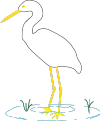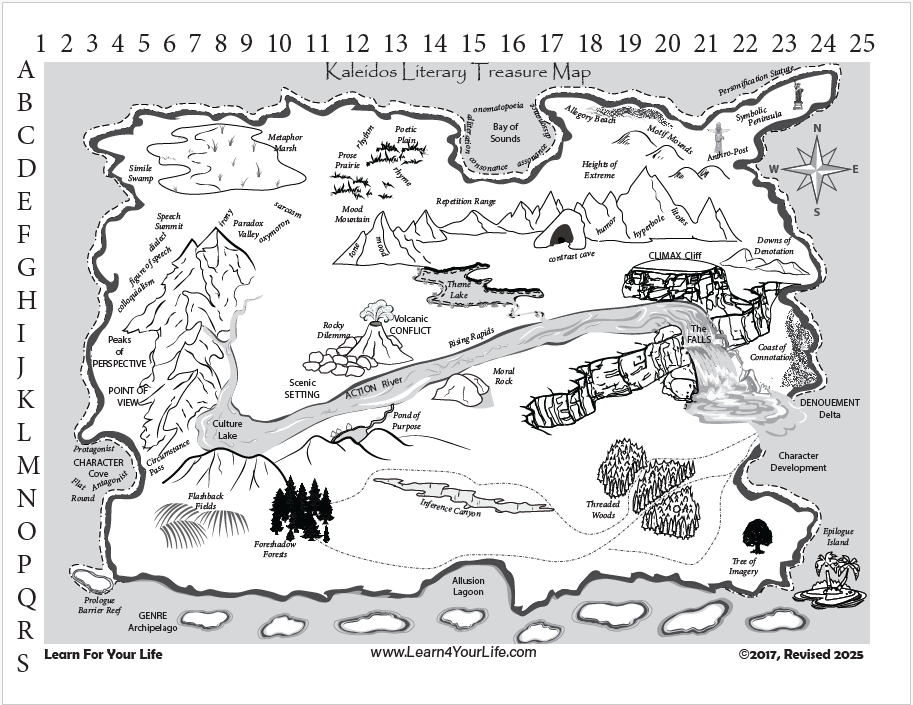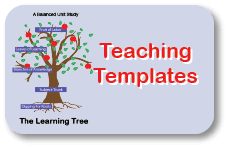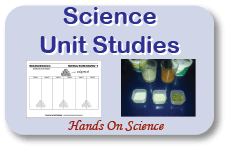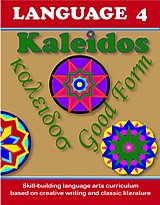Literary Treasure Map
The Kaleidos Literary Treasure Map takes the reader on a new type of treasure hunt: find the literary elements embedded in the story.
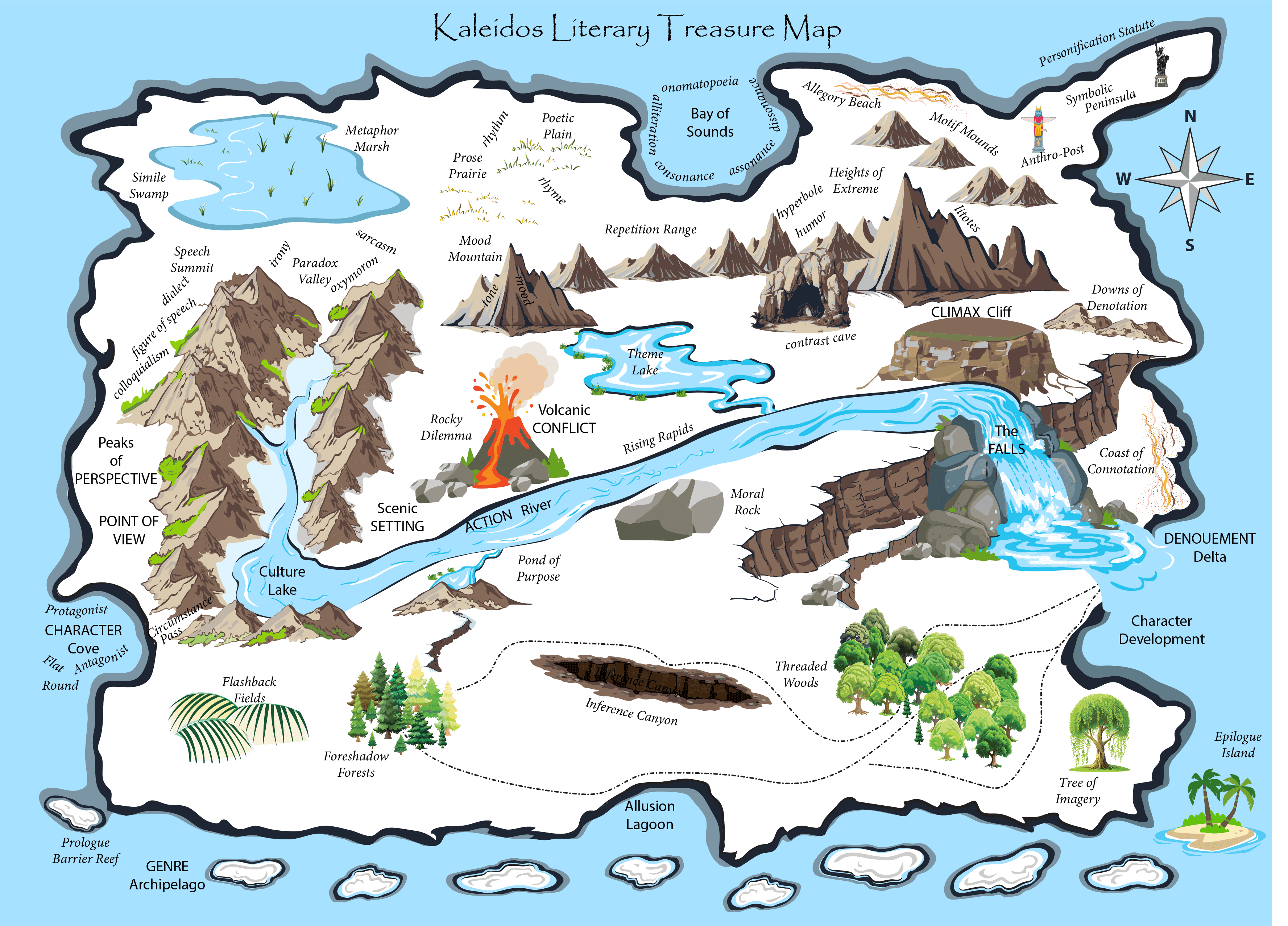
Full Color Version
What Is A Literary Treasure Map?
It's a hunt for the skeleton of the story!Readers easily recognize the action of the story, but beneath the plot lies the skeleton: the elements of literature that give form and shape to a tale and allow it to get up and move.
Action Plot Diagram
The standard action plot diagram is well known: Exposition, Rising Action, Climax, Falling Action, Denouement.
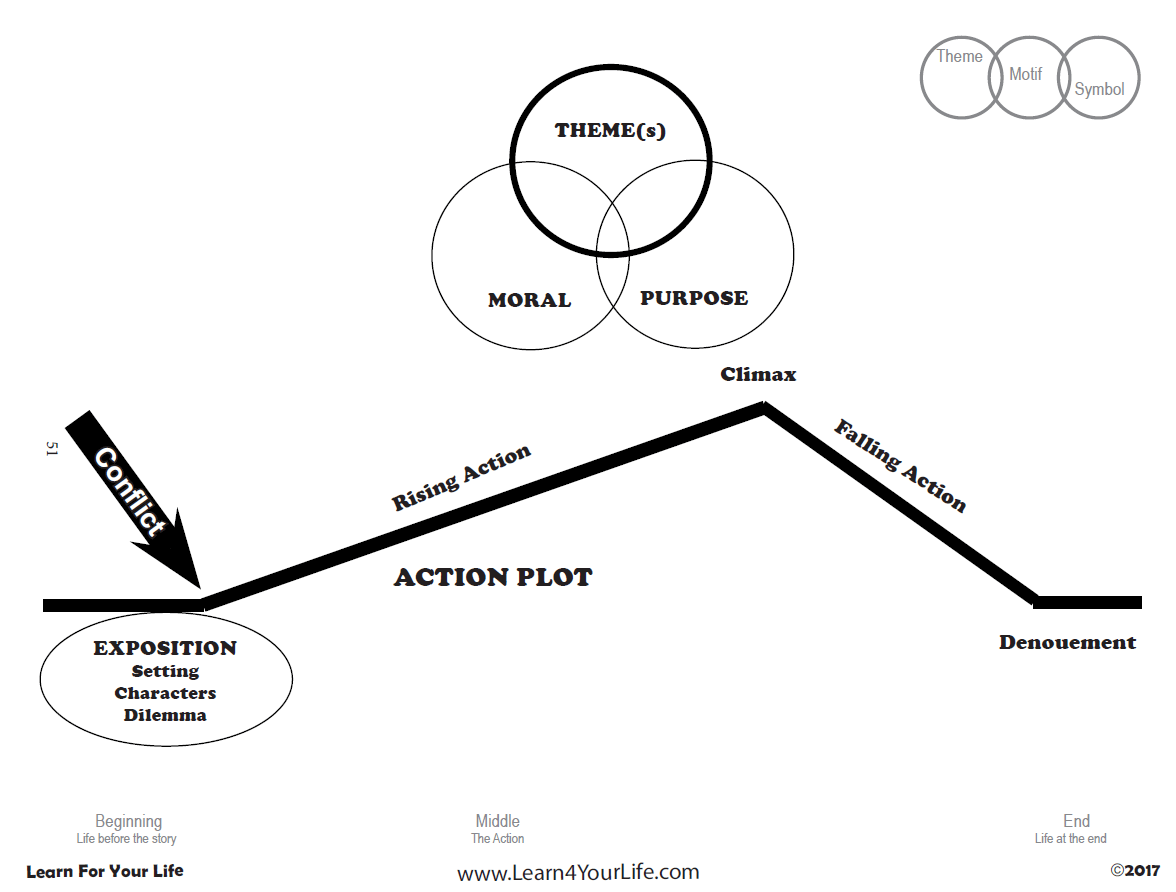
Compare the standard action plot to the Kaleidos Literature Map. You will see the river in the middle IS the action plot.
The main character takes a ride up (and then down) the Action River.
Reader's Journey
While the protagonist travels the Action River, the readers have another job. They go on a hunt to find the literature treasures buried into the story.Take a ride on the Action River
Exposition
The three major parts of the exposition are on the starting side (left side) of Action River.- Character: Character is introduced at Character Cove
- Setting: The Scenic Setting describes the time and location of the tale.
- Dilemma: Without the Rocky Dilemma (ie volcano) there would be no action to report.
Rising Action
Rising Rapids create the bumpy, thrilling ride as the action climbs.Climax
At the peak of the action is the Climax Cliff.Every story has one. The map helps readers identify the climax in every narrative they encounter.
Falling Action
Maybe it's a short drop, maybe it's a long one. But the Waterfalls take the action from high to resolution.Denouement
It ends at the end. The Denouement Delta ends the journey - and contrasts with the original exposition.Character and Culture
Character Cove
The Character's journey starts at The Cove. Who is our character(s). Do they have round or flat personalities? Are there any antagonists?The characters' background is in the Cove. They travel across the divide to their current situation and exposition.
Culture
Culture is the air we breathe, but in this map it is represented by water. We are usually not aware of culture, particularly if it's ours. But when it is unfamiliar to us - or our main character - it can't be ignored.Along the River, In Every Story
Close to Action River, are three essential (and often over-lapping) elements: Theme, Purpose, and Moral of the Story.Theme
Theme Lake spills into Action River as readers contemplate the literary themes of their story.Author's Purpose
The Pond of Purpose indicates the author's reason for writing the story to begin with. Did the author tell us their motiviation?Moral of the Story
Theme and purpose sometimes overlap with the main point of the story, which is encountered at Moral Rock. Do the main character and the readers go away with the same lesson?Other Literary Elements
The Readers' Journey
Around the island are other features that represent elements of literature. These include:- Point of View
- Perspective Peak
- Speech Summit includes dialect, figures of speech, and colloqualism
- Simile Swamp and Metaphor Marsh
- The Bay of Sounds: Onomatopoeia, Assonance, Alliteration, Dissonance, etc
- Poetic Plains and Prose Prairie
- Paradox Valley: Irony, Sarcasm, Oxymoron
- Mood Mountain (mood vs tone)
- Repetition Range
- Heights of Extremes overlook humor, hyperbole, litotes, and contrast cave
- Symbolic Peninsula with Statue of Personification and Anthro-post
- Allegory Beach
- Motif Mounds
- Flashback Field and Foreshadow Forests
- Inference Canyon & Allusion Island
- Allusion Lagoon
- Tree of Imagery
- Genre Archipelago
- Prologue Reef and Epilogue Island
How Is the Literature Treasure Map Used?
The map is used in Kaleidos as well as different literature unit studies to teach the elements of literature.Of course, it does come with a handy dictionary (just in case you confuse one or two of those terms.)
Third and fourth grade Kaleidos students use the grid (ie north three steps or 3 cm, and east two steps or 2 cm) to land on their next literary destination.
Fifth and sixth grade Kaleidos students make tracks across the map for each story as they discover the elements the author hid.
Seventh and eighth grade Kaleidos students get to... you guessed it... try their own hand at making their own maps.
Of course, as any savvy unit study student knows, there are dozens of ways to use a treasure map.
Purpose of Kaleidos Literary Map
It's fun, yes. It's hands-on learning. The treasure map takes an abstract concept (literary elements, foreshadowing, etc.) and makes it tangible.Touch and remember, explore and explain. Manipulate the concept by including it in your own map with your own example, and mastery of the concept is gained.
What's Included
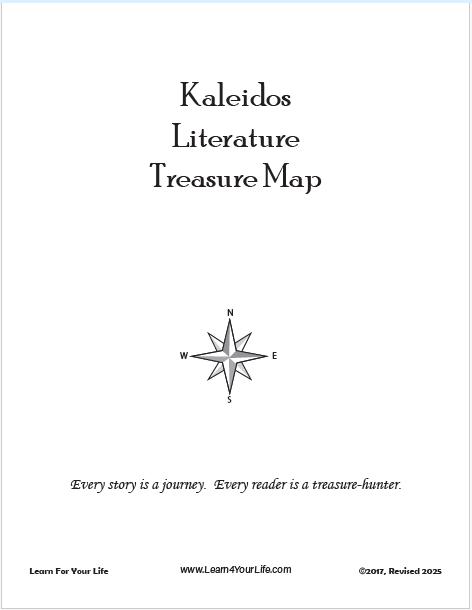
- Action Plot Worksheet
- Detailed Action Plot Diagram with Theme, Purpose, and Moral
- How to Use The Map
- Dictionary of Literary Elements
6 Copies of the Literature Treasure Map
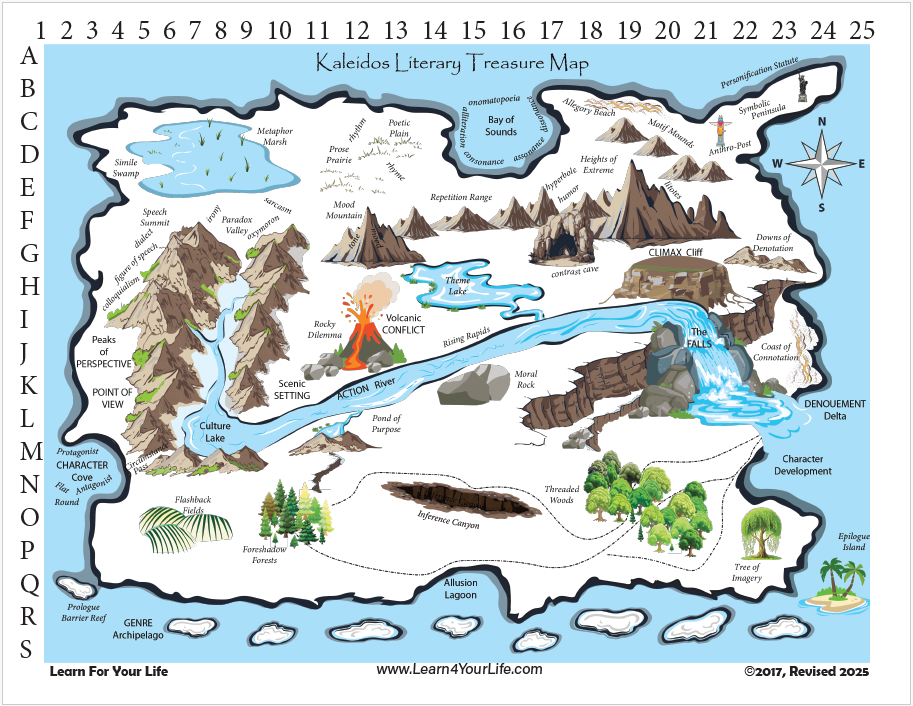
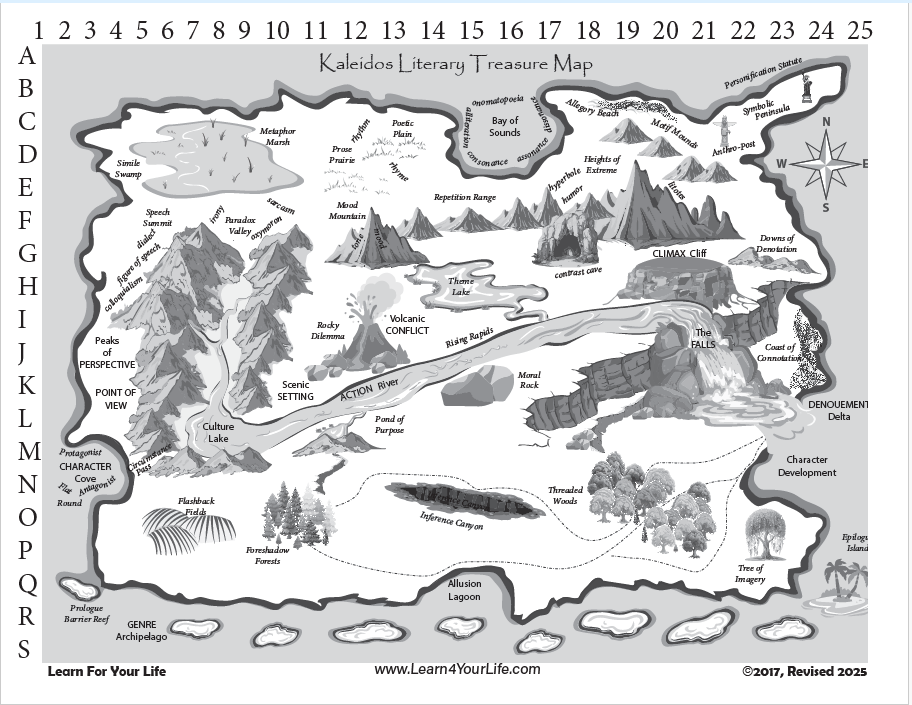
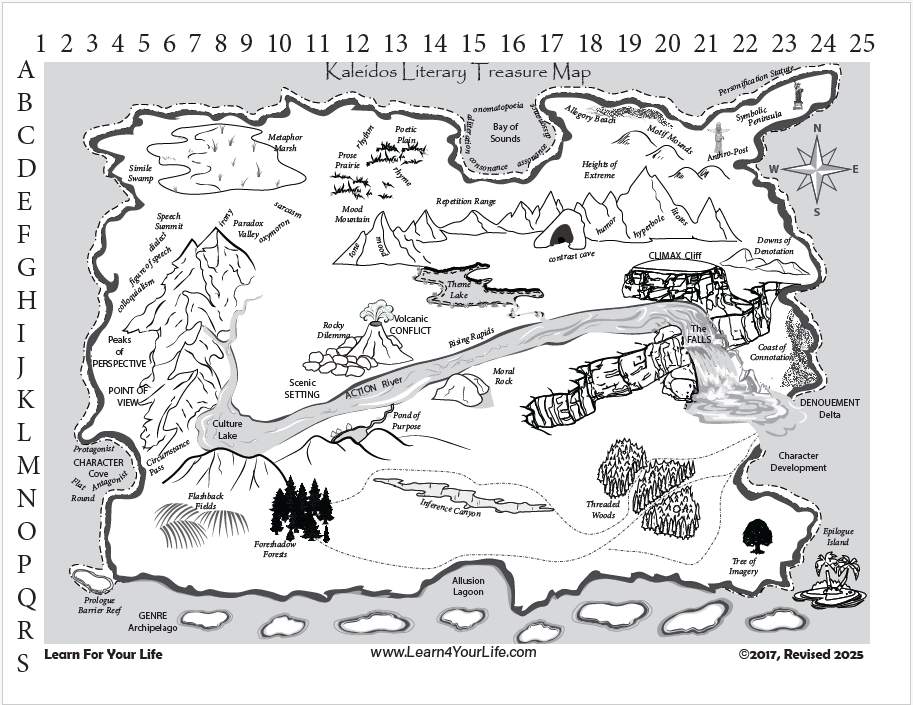
Map in Color, Grayscale, and Black and White
With and Without Labels
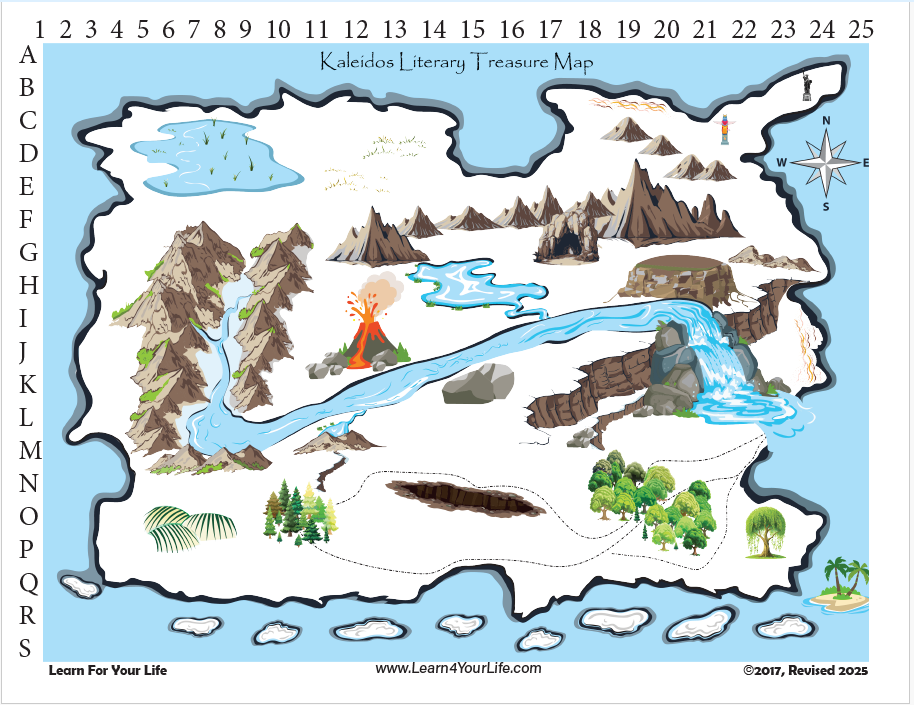
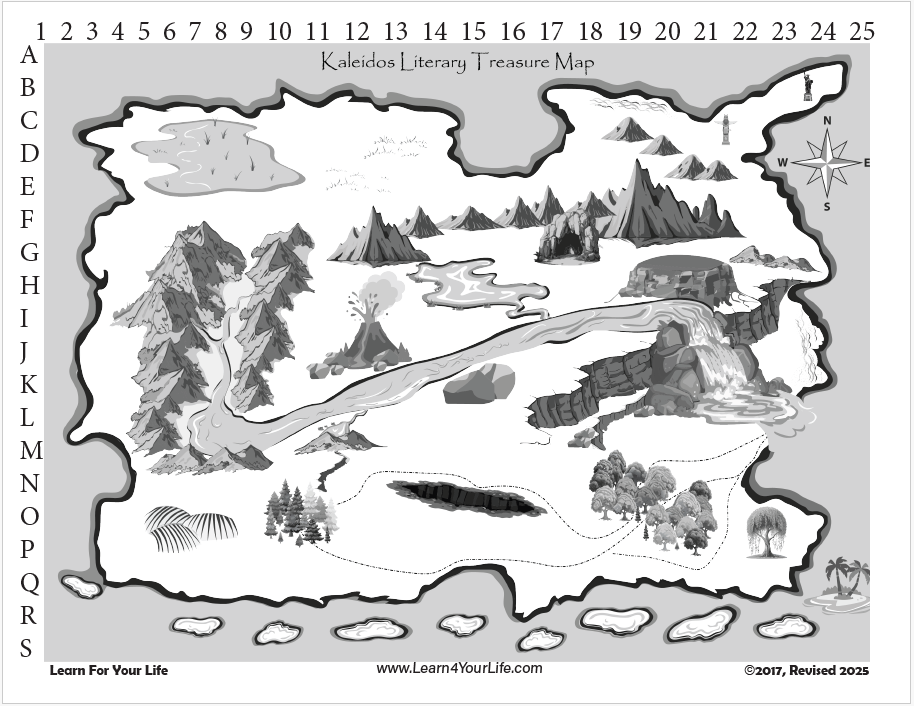
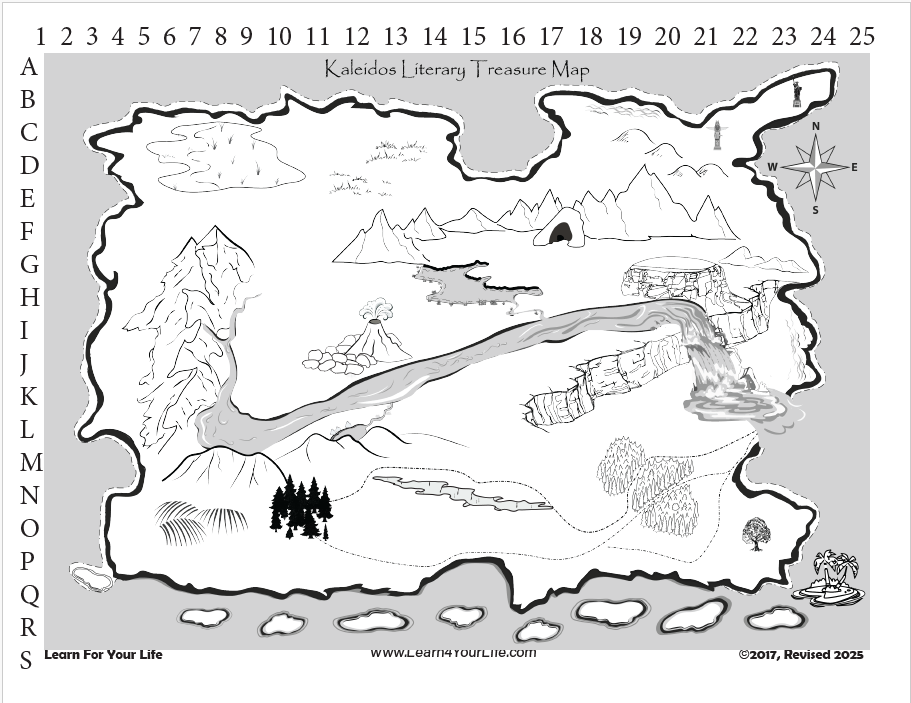
Get the Kaleidos Literature Treasure Map
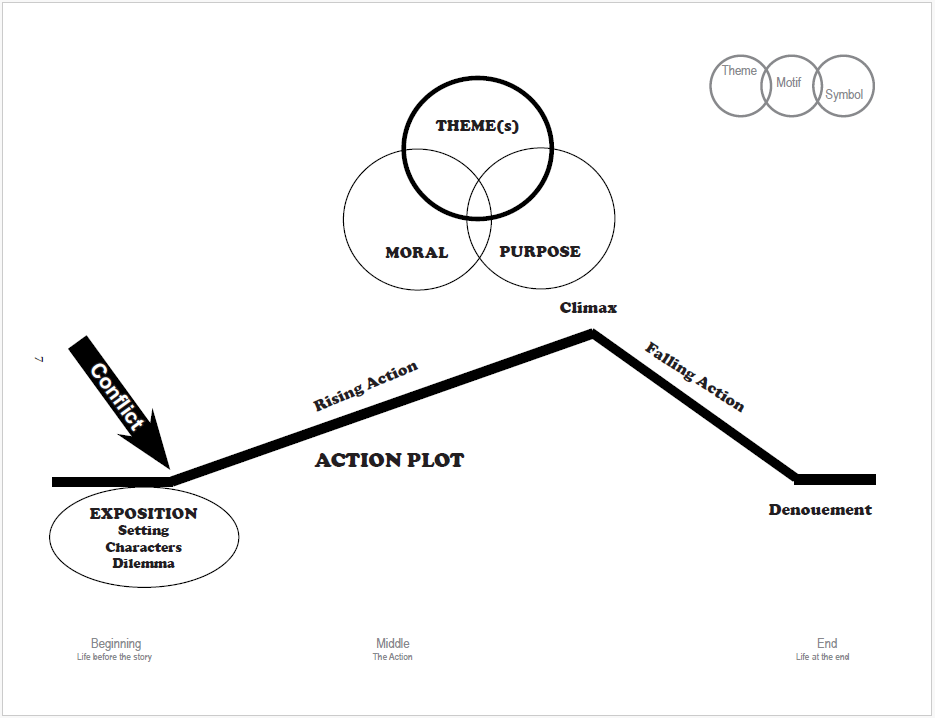

Unit Includes 6 Maps and Dictionary of Literary Terms
$2.99 Download - 13 Pages
![]()
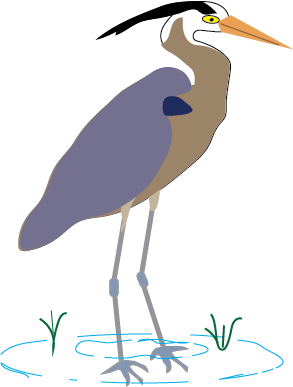
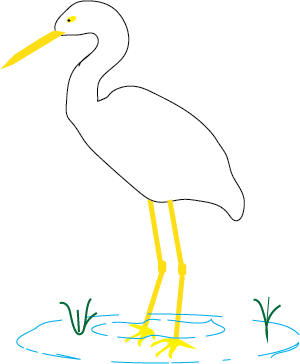
About Our Site
Hands-On Learning

